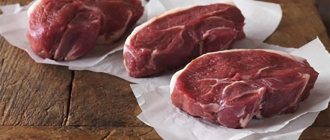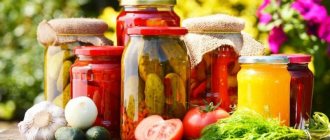OgorodGuruCom
Tips and tricks for gardeners
Popular
Why do the leaves of pepper seedlings curl on the windowsill?
Home › Vegetables › How long can bean seeds be stored at home?
Beans are a tasty and very healthy legume, the basis of many hearty dishes. After harvesting the beans, the gardener is faced with the question of how long the beans can be stored and how to properly stack the crop so that in the future it can not only be used for cooking, but also for planting for the new year.
How long do bean seeds remain viable?
The maximum shelf life of beans is about 6 years. But the longer the product sits, the lower the likelihood that it will be used for planting. The optimal period is considered to be from 2 to 4 years.
The shelf life of each bean variety can vary significantly. Exact information about how long the seeds remain viable is indicated on the packaging with the seed according to GOST.
The shelf life date is only valid if the seeds are kept in a hermetically sealed container.
The shelf life is indicated on the packaging
White and red beans: health benefits
According to some scientists, red beans are the richest in antioxidants, that is, substances that prevent aging, protect the cardiovascular system from various problems, and help in the prevention of cancer. Considering that beans, not only red beans, but any other, contain about 20% vegetable protein, with only 2% fat and 58% carbohydrates, they can be considered as an alternative source of protein, especially for those who follow a vegetarian diet . Many components of this product help maintain the beauty of skin, hair and nails. It also reduces the level of “bad” cholesterol in the blood. Plus, these beans are simply delicious when used in side dishes, salads, and other dishes. They are a very filling product without being overly high in calories. Here they are - white or red beans, their benefits for the body are comparable to products such as currants or cranberries. Be sure to include this very inexpensive and accessible product in your diet.
Conditions necessary for storing beans, terms
The quality of seeds can only be preserved by storing them correctly, providing the product with the necessary conditions for it:
- Containers - glass or metal containers, fabric bags or cardboard boxes. It is recommended to select small containers, laying out the product in portions.
- Temperature - should not be higher than +10 °C, the ideal indicator should be at around +5 °C.
- Humidity level - no more than 50%. If the humidity is high, there is a high risk of mold.
Under such conditions, the dried product will last for about 2 years without losing its qualities.
Attention! If the seeds will be kept in fabric bags, it is recommended to hang them to ensure adequate ventilation.
White and red beans: benefits and harm to the body
If we talked about the nutritional and beneficial properties above in sufficient detail, then the dangers of the product should also be mentioned. Some people should take into account that this legume cannot be consumed by everyone. It should be eaten with caution by people suffering from the following diseases:
Do you always follow the correct storage of food/medicines and their product proximity?
Yes, of course, this is very important so as not to spend money on your health later.
44.04%
Not really, because there won’t be anything like going to the toilet.
25.48%
I look at it by appearance and if I use anything after heat treatment.
30.47%
Voted: 361
- high acidity or gastritis;
- ulcers or cholecystitis, as well as gout and colitis;
- people with a tendency to flatulence.
Keep in mind that red beans, the benefits and harms of which (especially the last harm) differ from the same characteristics of other types of beans, cause gas formation to a lesser extent. But you still need to prepare it with caution and especially carefully. Please note that any beans are always soaked for at least several hours before cooking. Some housewives recommend adding a pinch of soda to the water - this way the beans will cook faster and become soft. Also, to reduce gas formation, it is recommended to add various spices, for example dill, to the boiled porridge.
Seed storage location
To store seeds in winter, it is recommended to choose the following places:
- balcony or loggia;
- cellar;
- basement.
If it is not possible to keep the seeds in a cellar or basement, a loggia or balcony will do. But in such places it is recommended to keep the product in boxes with low sides, and keep them as close as possible to the balcony door.
Attention! Regardless of where you choose to store your beans, keeping it clean will help reduce the likelihood of pests.
Another option for storing vegetables is using vacuum bags.
What beneficial substances do beans contain?
Considering the chemical composition, we can highlight the following components of beans, the benefits of which for the body are undoubted. So, it contains:
- vitamins A, group B, in particular B1, B2 and B6, K, PP and vitamin C;
- In addition, it contains a useful and necessary antioxidant for all of us - vitamin E;
- Beans also contain large quantities of minerals - iron, calcium, phosphorus, magnesium, sodium, iodine, zinc;
- necessary acids - Omega-3, lysine, arginine and others.
In addition, beans contain a lot of fiber, which is necessary for proper digestion.
Selecting a storage mode
Before storing beans, you need to choose the best option for this. There are several of them, and each has both advantages and disadvantages:
- Correct temperature conditions for storing raw seeds. The beans are laid out in the selected container - in bags, jars, boxes, and placed in a cool, clean room with a temperature of no more than +5...+10 °C.
- Thermal mode - before the red beans are placed in containers, they must be calcined in the oven, gas or electric, at a temperature of 90 ° C for 5 minutes. The grains are poured into a glass container only after they have cooled completely. It is recommended to put a couple of garlic cloves on the bottom, then the vegetable will last for several years without any changes.
- Freezing - this mode involves placing the legumes in the freezer. It is recommended to place the beans in portions in bags and put them in the freezer, but first they must be rinsed and dried well. The advantage of the method is that the risk of insects is eliminated.
- Preservation - there are many recipes for preparing vegetables this way. The harvested beans can later be used to prepare various dishes - stews, borscht, salads.
After preservation, the vegetable does not lose its beneficial properties and taste.
The easiest way to prepare beans: soak 450 g of beans in water for 6 hours. Drain the water, put the grains in a saucepan and add 1 liter of water. Add 40 g of sugar and salt. Other spices are added to taste - pepper, cloves. You need to choose them based on how the boiled product will be used in the future.
Storing ready meals
- To store cooked beans for as long as possible, they are left in the liquid in which they were cooked, covered with a lid and placed in a cold place. Under such conditions, beans boiled without spices will last up to 5 days.
- Frozen storage of boiled beans can last for quite a long time, and the semi-finished product will not lose quality. This preparation can be used for preparing many dishes, and also as a filling for baked goods.
- Well-cooked and cooled beans should be frozen. It is portioned into bags, hermetically sealed and sent to the freezer. And like all other legumes, it cannot be defrosted again.
The main task when storing beans is to protect them from pests. It is also necessary to observe the appropriate temperature and air humidity. If you do everything correctly, you can store beans at home for several years.
Seed storage methods
How long dry beans are stored depends on the chosen method of keeping them. There are two of them - open and closed. Regardless of which storage method is chosen, a number of recommendations must be followed regarding the preparation of legumes and their further maintenance:
- Grains with a white coating cannot be stored; they must be selected from the total mass.
- Vegetables in pods should not be stored for more than a few days, as the grains will begin to dry out quickly, which will lead to the beginning of the pod rotting.
- Before putting the beans into containers, do not wash them.
- Dry grains are subject to storage, without signs of any damage.
- Before putting the beans into containers, they need to be sorted - damaged or dried grains are discarded.
Additional Information! To ensure that the prepared product lasts for several years and does not deteriorate, it is recommended to subject it to heat treatment, for example, in the oven. Then all excess moisture will be released from the grains, which will prevent them from rotting.
Culling legumes is a mandatory stage of preparation for storage
Open way
The open method involves storing beans in containers that allow moisture and air to pass through. Such containers include bags made of jute or linen material. These bags are sewn in 1 or 2 layers.
Closed method
The closed method of storing grains is less common. It involves keeping the seeds in a container that does not allow moisture and air to pass through. The container should be soft and consist of two layers - the inner one is polyethylene, the outer one is fabric. Inside such containers the humidity level will be from 6% to 9%.
The inner polyethylene layer must be tightly closed to prevent moisture from entering, and the outer, fabric layer can be tightened with side ropes.
For closed storage, you can purchase special bags
How to Preserve Green Beans for the Winter
Green beans are very tasty and aromatic. To keep it fresh, just place it in the freezer. Freshly picked pods are first washed under running water. Then the stalks and damaged areas are cut off. Beans that are too long need to be cut into pieces. To freeze fresh green beans for the winter, do the following:
- Blanch the green beans by immersing them in boiling water for 3-4 minutes. The product is then placed in ice water to preserve nutritional quality.
- Place the pods on a paper towel to drain all the water. Otherwise, an ice crust will form on the grains, which will deprive them of their special aroma.
- Dried beans are placed in plastic bags. The portion is calculated so that it can be completely consumed, because... re-freezing is not advisable. The bags are tied tightly and sent to the freezer.
How to protect seeds from pests
The appearance of insect pests in beans during long-term storage is a common problem, and if you do not protect the beans from various bugs, they will be severely damaged and become unusable. Simple tips will help prevent insects from appearing:
- If the beans are in cloth bags, it is recommended to place a few garlic cloves in them. Garlic secretes enzymes that repel all insects.
- Beans can be stored in the refrigerator, where there is no chance of insects. But you can keep the legume crop there until cold weather sets in outside, then you need to move it to a cool place - a balcony in an apartment is suitable for this.
- When storing in glass containers, you need to pour a small amount of wood ash on the bottom - for 0.5 container volume you will need from 10 to 20 g of product. The container itself should only be closed with a metal lid.
Additional Information! One of the easiest ways to protect beans from insects in your home is to use printing inks. If you need to store beans in large quantities, use spacious boxes or cardboard boxes with newspapers laid out in several layers at the bottom.
Without taking measures, it will not be possible to protect the workpieces from pests; they will be destroyed
Where and in what to store beans
After harvesting and drying, the beans are stored in an airtight container: a glass jar with a lid, a plastic bag or a plastic container. You can also store supplies in a canvas bag. It must first be soaked in a saline solution and dried without rinsing. This impregnation will protect the crop from harmful insects. It is better to keep linen bags with grains in a dark, cool place: in a closet, basement or pantry. But an airtight container with grains can be stored even at room temperature by placing it in a kitchen cabinet. The main condition is to stay away from heat sources.
Important!
Jars must be sealed with metal or glass lids, because... plastic ones allow air to pass through. However, you need to remember that in an airtight container the seeds lose their viability.
Warm and moist air promotes bean germination. Therefore, food supplies should be placed in a dark, cool place. The grains tolerate low temperatures well and do not lose their nutritional qualities. To prevent beans from getting bugs, you need to store them in the refrigerator until winter. When frost sets in, the container with grains should be moved to an insulated balcony. Beans left for the winter can be stored in the utility room, having gotten rid of rodents in advance.
Specifications
Official publication
Moscow
Rtmnform 2013 stand
Preface
The goals and principles of standardization in the Russian Federation are established by Federal Law No. 184-FZ of December 27, 2002 “On Technical Regulation”, and the rules for applying national standards of the Russian Federation are GOST R 1.0-2004 “Standardization in the Russian Federation. Basic provisions"
Standard information
1 DEVELOPED by the State Scientific Institution “All-Russian Scientific Research Institute of Canning and Vegetable Drying Industry” of the Russian Academy of Agricultural Sciences (GNU “8NIIKOP” of the Russian Agricultural Academy)
2. INTRODUCED by the Technical Committee for Standardization TC 93 “Processed products of fruits, vegetables and mushrooms”
3 APPROVED AND ENTERED INTO EFFECT by Order of the Federal Agency for Technical Regulation and Metrology dated December 13, 2011 No. 838-st
4 INTRODUCED FOR THE FIRST TIME
Information about changes to this standard is published in the annually published information index “National Standards”. and the text of changes and amendments is in the monthly published information indexes “National Standards”. In case of revision (replacement) or cancellation of this standard, the corresponding notice will be published in the monthly published information index “National Standards”. Relevant information, notifications and texts are also posted on the public information system - on the official website of the Federal Agency for Technical Regulation and Metrology on the Internet
© Standardinform. 2013
This standard cannot be fully or partially reproduced, replicated and distributed as an official publication without permission from the Federal Agency for Technical Regulation and Metrology
Content
Appendix A (recommended) Consumer and transport packaging, closures for
in
NATIONAL STANDARD OF THE RUSSIAN FEDERATION
CANNED BEANS Technical specifications
Canned beans. Specifications
Date of introduction: 2013—01—01
1 area of use
This standard applies to canned food made from food beans, in a filling or sauce with or without the addition of salt, tomato paste, sugar, vegetable oil, vegetables, spices.
8 Depending on the recipe composition, canned beans are made: natural beans: beans in tomato sauce; beans in vegetable sauce.
Safety requirements are set out in 5.2.3.5.2.4. quality requirements - in 5.2.1.5.2.2. for marking - in 5.5.1—5.5.3.
2 Normative references
This standard uses normative references to the following standards:
GOST R 51074—2003 Food products. Information for the consumer. General requirements GOST R 51301-99 Food products and food raw materials. Inversion-voltammetric methods for determining the content of toxic elements (cadmium, lead, copper and zinc) GOST R 51574-2000 Table salt. Technical specifications GOST R 51766—2001 Raw materials and food products. Atomio-absorption method for determination of arsenic
GOST R 51962—2002 Food products and food raw materials. Stripping-voltammetric method for determining the mass concentration of arsenic
GOST R 52173—2003 Raw materials and food products. Method for identifying genetically modified sources (GMI) of plant origin
GOST R 52174—2003 Biological safety. Raw materials and food products. Method for identifying genetically modified sources (GMI) of plant origin using a biological microchip
GOST R 52465—2005 Sunflower oil. Specifications
GOST R 52467-2005 Products of processing of fruits, vegetables and mushrooms. Terms and definitions GOST R 52622-2006 Dried vegetables. General technical conditions
GOST R 53959—2010 Products of processing of fruits, vegetables and mushrooms. Packaging, labeling, transportation and storage
GOST R 54004—2010 Food products. Sampling methods for microbiological tests
GOST R 5401S—2010 Food products. Sampling method for determination of strontium Sr-90 and cesium Cs-137
GOST R 54016—2010 Food products. Method for determining cesium content Ce-137
Official publication
GOST R 54017—2010 Food products. Method for determining strontium content Sr-90 GOST R 54678—2011 Concentrated tomato products. General technical conditions GOST 8.579—2002 State system for ensuring the uniformity of measurements. Requirements for the quantity of packaged goods in packages of any type during their production, packaging, sale and import
GOST 21-94 Granulated sugar. Specifications
GOST 1721-85 Fresh table carrots, prepared and supplied. Technical specifications GOST 1723-86 Fresh onions, prepared and supplied. Technical specifications GOST 5717.2—2003 Glass jars for canned food. Main parameters and dimensions GOST 5981-88 Metal cans for canned food. Technical specifications GOST 7758-75 Food beans. Specifications
GOST 8756.1-79 Canned food products. Methods for determining organoleptic characteristics, net weight or volume and mass fraction of constituent parts
GOST 8756.18-70 Canned food products. Method for determining the appearance, tightness of containers and the condition of the internal surface of metal containers GOST 14192-96 Marking of cargo GOST 17594-81 Dry bay leaf. Specifications
GOST 25555.3-82 Processed products of fruits and vegetables. Methods for determining mineral impurities
GOST 25749—2005 Metal screw caps. General technical conditions GOST 26186-84 Processed products of fruits and vegetables, canned meat and meat-and-vegetables. Methods for determination of chlorides
GOST 26313-84 Products of processing of fruits and vegetables. Acceptance rules, selection methods
samples
GOST 26323-84 Products of processing of fruits and vegetables. Methods for determining the content of plant impurities
GOST 26669-85 Food and flavoring products. Preparation of samples for microbiological analyzes
GOST 26670-91 Food products. Methods for cultivating microorganisms GOST 26671-85 Processed products of fruits and vegetables, canned meat and meat-and-vegetable products. Preparation of samples for laboratory analysis
GOST 26927-86 Raw materials and food products. Methods for determining mercury GOST 26929-94 Raw materials and food products. Sample preparation Mineralization to determine the content of toxic elements
GOST 26930-86 Raw materials and food products. Arsenic determination method
GOST 26932-86 Raw materials and food products. Lead determination methods
GOST 26933-86 Raw materials and food products. Methods for determining cadmium
GOST 26935-86 Canned food products. Tin determination method
GOST 28038-89 Products of processing of fruits and vegetables. Mycotoxin determination method
patulin
GOST 29045-91 GOST 29050-91 GOST 29053-91 GOST 29270-95 GOST 30178-96
Spices. Allspice. Specifications
Spices. Black and white pepper. Specifications
Spices. Ground red pepper. Specifications
Processed products of fruits and vegetables. Methods for determining nitrates
Raw materials and food products. Atomic absorption method for determining toxic elements
GOST 30349-96 Fruits, vegetables and their processed products. Methods for determining residues of organochlorine pesticides
GOST 30425-97 Canned food. Method for determining industrial sterility GOST 30538-97 Food products. Methodology for determining toxic elements using the atomic emission method
GOST 30710—2001 Fruits, vegetables and their processed products. Methods for determining residues of organophosphorus pesticides
Note - When using this standard, it is advisable to check the validity of the reference standards in the public information system - on the official website of the Federal Agency for Technical Regulation and Metrology on the Internet or using the annually published information index “National Standards”, which was published as of January 1 of the current year , and according to the relevant monthly information decrees. published this year.
If the reference standard is changed (changed), then when using this standard you should be guided by the replacing (changed) standard. If a reference standard is canceled without replacement, then the provision in which a reference to it is given applies to the part not affecting this reference.
3 Terms and definitions
This standard uses terms according to GOST R 52467.
4 Technical requirements
4.1 Canned beans are manufactured in accordance with the requirements of this standard and the manufacturer’s documents (technological instructions and recipes) in compliance with the requirements established by regulatory legal acts of the Russian Federation.
4.2 Characteristics
4.2.1 Requirements for organoleptic properties of canned and beans are given in Table 1.
Table 1
| Indicator name | Characteristic |
| appearance taste and smell | Bean grains of the same type, uniform in size, in a filling or sauce. The presence of grains damaged by agricultural pests is not allowed Characteristic of this type of canned food. Foreign tastes and odors are not allowed |
| Color | The grain is homogeneous, characteristic of this type of bean. Fillings have a bean-colored tint, with a small amount of suspended pulp particles. The sauce is orange-red. A red-brown tint is allowed. Single grains slightly different in color from the main mass are allowed |
| Consistency | The grains are whole, soft, but not boiled. The presence of boiled bean grains is allowed no more than 10% by weight and slight gelling of the filling |
4.2.2 Requirements for physical and chemical indicators of canned beans are given in Table 2.
table 2
| Indicator name | Indicator value |
| Mass fraction of beans from the net weight of canned food. %. no less | 55.0 |
| Mass fraction of chlorides. %: | |
| • for natural beans | 0.5—1.2 |
| • for beans in tomato sauce, beans in vegetable sauce | 1.0—1.4 |
| Mineral impurities, vegetable impurities and foreign matter | Not allowed |
| impurities |
4.2.3 The content of toxic elements, pesticides, radionuclides, nitrates and the mycotoxin patulin (for beans in tomato sauce) in canned beans should not exceed the standards established by regulatory legal acts of the Russian Federation.
4.2.4 Microbiological indicators of canned beans should not exceed the standards established by regulatory legal acts of the Russian Federation.
4.3 Requirements for raw materials
4.3.1 For the production of canned beans, the following types of raw materials are used:
. food beans of all three types, except black, according to GOST 7758:
• fresh table carrots according to GOST 1721;
• dried carrots according to GOST R 52622:
• strong fresh onions according to GOST 1723:
• dried onions according to GOST R 52622;
• concentrated tomato products according to GOST R 54678:
• refined deodorized sunflower oil [3]. GOST R 52465:
• table salt according to GOST R 51574:
— granulated sugar according to GOST 21;
— dry bay leaf according to GOST 17594;
• black bitter pepper GOST 29050;
• ground red pepper according to GOST 29053;
— allspice lo GOST 29045:
• drinking water according to [4], which does not contain spores of meiophypic clostridia per 100 cm3.
4.3.2 It is also permitted to use other domestic and imported raw materials with characteristics not lower than those specified, permitted for use in the food industry.
4.4 Packaging
4.4.1 Packaging - according to GOSTR53959 with the following additions:
4.4.1.1 Canned beans are packaged in hermetically sealed consumer containers and packed in transport containers.
Consumer packaging, closures and transport packaging must be approved for use in the food industry.
4.4.1.2 Consumer and transport packaging and closures must ensure the safety of the product and its compliance with the requirements of this standard throughout the entire shelf life, subject to the conditions of transportation and storage.
Recommended consumer containers and closures for filling and packaging canned food and transport containers are given in Appendix A.
It is allowed to use imported containers and materials approved for use in the food industry.
4.4.1.3 The net weight of the product in one packaging unit must correspond to the nominal weight. indicated in the product labeling in the shipping container, taking into account permissible deviations.
Limits of permissible deviations of the net mass of the product in one packaging unit from the nominal - according to GOST 8.579. GOST R 53959.
4.5 Marking
4.5.1 Labeling of the product in consumer packaging - according to GOST R 51074 and GOST R 53959. Nutritional value - in accordance with Appendix B.
4.5.2 Transport marking - according to GOST R 53959 and GOST 14192.
4.5.3 Paints and glue used for marking and gluing labels to containers must be approved for contact with food products.
5 Acceptance rules
5.1 Acceptance rules - according to GOST 26313.
5.2 Canned beans are accepted in batches. A batch is considered to be any number of packaging units of the same name, manufactured by an enterprise in one shift, identically packaged, accompanied by shipping documentation that ensures product traceability.
5.3 Control of organoleptic, physico-chemical parameters, net weight, quality of packaging and labeling is carried out for each batch of canned food.
5.4 Control of the content of toxic elements, nitrates, mycotoxin patulin. pesticides and radionuclides in canned beans are carried out at intervals specified in the production control program.
5.5 Microbiological quality control of the product is carried out in accordance with the production control program in accordance with the requirements [5].-
6 Methods of analysis
6.1 Sampling for determination of organoleptic and physicochemical parameters - according to GOST 26313. Preparation of samples for testing - according to GOST 26671, mineralization of samples for determination of toxic elements - according to GOST 26929. Selection and preparation of samples for determination of radionuclides - according to GOSTR54015.
6.2 Determination of organoleptic indicators (see 4.2.1. Table 1) - according to GOST 8756.1. container tightness - according to GOST 8756.18.
6.3 Determination of physicochemical parameters (see 4.2.2):
• mass fraction of beans - according to GOST 8756.1:
• mass fraction of chlorides - according to GOST 26186;
• mass fraction of mineral impurities - according to GOST 25555.3:
• mass fraction of impurities of plant origin - according to GOST 26323;
• foreign impurities - visually.
6.4 Determination of toxic elements - according to GOST 26927. GOST 26930. GOST 26932. GOST 26933. GOST 26935. GOST 30178. GOST 30538. GOST R 51301. GOST R 51766. GOST R 51962.
6.5 Determination of pesticides - according to GOST 30349. GOST 30710.
6.6 Determination of nitrates - according to GOST 29270.
6.7 Determination of mycotoxin patulin - according to GOST 28038.
6.8 Determination of radionuclides - according to GOST R 54016. GOST R 54017.
6.9 Sampling methods for microbiological analyzes - according to GOST R 54004. Sample preparation - according to GOST 26669. cultivation of microorganisms and processing of results - according to GOST 26670.
6.10 Microbiological tests to confirm industrial sterility - according to GOST 30425.
6.11 GMI control - according to GOST R 52173. GOST R 52174.
Preparation for storage
It is advisable to take care of ensuring a long shelf life of beans when harvesting.
Beans intended for winter storage should be removed when the pods have dried out and become hard to the touch, but before the doors open slightly. Pests or harmful microorganisms can penetrate grains spilled on the ground, which will accelerate the spoilage of the product. In view of this, ripe pods should be carefully cut with scissors, and beans should be harvested in the morning while the pods retain moisture, which reduces the risk of accidental husking. The grains in ripe pods should be fully formed, smooth, but still moist. Harvested beans should be dried before threshing. In warm and clear weather, the pods should be scattered in one layer and placed in the sun, and put indoors at night. If the weather is damp, you can dry the pods by tying them in bunches and hanging them in a place blown by the wind.
This process can take from 7 to 18 days. When the pods begin to open and the grains become firm, the beans can be shelled. Cleaned grains cannot yet be stored; they should be scattered on paper or cloth and dried for 4-7 days. Periodically, the beans need to be turned over so that excess moisture is evenly removed from the grain.
It is important that the raw materials are completely dry before packaging, so washing the beans is not recommended. Even a little moisture will trigger the development of mold, followed by rotting of the beans.
Only healthy, undamaged grains should be left for the winter.
Tips for selecting beans for storage:
- To create a stock, only smooth, elastic pods without spots should be selected.
- After husking, you need to select all dried, wrinkled or mechanically damaged grains.
- You should not leave fruits that have black spots on the surface. Such grains are affected by bugs and will disappear by mid-winter, infecting the rest of the stock.
How long do green beans last in the refrigerator?
There are several ways to extend the shelf life of green beans.
.
If you store
green
beans in the refrigerator
, they will stay fresh for 3-4 days. In sealed packaging, it can retain its beneficial and tasteful properties for up to 7 days.
Interesting materials:
What is the maximum fine for a legal entity for violating the procedure for carrying out legal proceedings? What is the minimum fine for speeding? What's a fine without a seat belt? What is the fine for not having car insurance? What is the fine for a novice driver without a sign? What is the fine for speeding? What fine must the owner of the 195 car pay? What is the fine if you don't have a mask? What is the fine if you drive without a category? What is the fine if the lights are not on?
First aid and treatment for poisoning
If signs of poisoning are detected, it is recommended to call a team of doctors. The victim is given first aid, which includes simple actions:
- Gastric lavage is carried out, it is allowed to use water or a weak solution of potassium permanganate.
- After the procedure, the victim is given sorbents to drink - activated carbon, Polysorb.
- It is allowed to use a saline laxative - magnesium sulfate.
- To prevent dehydration, the patient is given plenty of fluids to drink - water, medicinal solutions (Regidron, Hydrovit), herbal infusions.
- It is possible to reduce pain in the abdomen with the help of the drug No-Shpa.
For mild poisoning, first aid is usually sufficient. Unpleasant symptoms disappear, weakness and poor appetite persist for two days.
If the poisoning is severe, the victim will require hospitalization. In a medical institution, diagnostics are carried out and suitable treatment is selected:
- gastric lavage using a tube;
- use of siphon enemas;
- administration of saline, glucose and other medications;
- symptomatic treatment using drugs to restore the functioning of the cardiac, digestive and other systems.
The victim is prescribed bed rest, plenty of fluids and rest until complete recovery. Compliance with dietary nutrition is important. Vitamin complexes, medications aimed at restoring the liver, and probiotics are prescribed.
Tips for cooking red beans
While it is very easy to prepare a leguminous vegetable - it can be easily cooked, then the situation with red vegetables is somewhat worse. More precisely, no worse, but more complicated. It needs to be soaked - we have already mentioned this fact, and it is best to soak it overnight. After this, it should be filled with new water, put on the stove and wait until the liquid boils. Immediately after boiling, this water must be drained and then new water must be poured. In this case, the beans will retain more nutrients and simply taste better. You can also add spices and a couple of tablespoons of vegetable oil during the cooking process. In our article we talked in detail about beans; the benefits and harms were also discussed. Agree, the product still has more positive properties, so be sure to include it in your family’s diet.
Most of the plant foods we eat are healthy in one way or another. Today in our article we will look at the benefits and harms of beans, name a group of people who should definitely include them in their diet, and give the chemical composition of the product and other interesting characteristics.
Selection of containers and creation of optimal conditions
After harvesting, beans should be stored in an airtight container. Suitable for this:
- food grade plastic container;
- plastic bag;
- glass jar.
It is necessary to prevent insects from entering the container. The optimal conditions for storing beans are low air temperature and lack of humidity. If it is impossible to exclude the penetration of grain, it is better to leave containers with beans in the freezer. Then, with the onset of winter, the containers are moved to the balcony.
Humidity and heat promote germination of grains. Therefore, it is impossible to keep beans in such conditions for a long time. Such sprouts are not eaten, but they can be used for planting in the spring. If planting material is stored in a fabric bag, before filling it with beans, it is soaked in a salty solution and dried. This treatment eliminates attacks from weevils and other insects.
Canned beans
This preparation is an excellent way to preserve the bean harvest for the winter. Canned food prepared according to all the rules is stored for two years.
Ingredients:
- 0.5 kg beans;
- 1 liter of cold water;
- 40 g granulated sugar;
- 40 g salt;
- 7 tsp. table vinegar;
- cloves to taste;
- black peppercorns to taste;
- cold water for soaking.
How to cook:
The beans are soaked for 7 hours in cold water. Then the liquid is drained and the beans are transferred to a clean pan. Add cold water according to the recipe, add sugar, salt and spices.
Bring the contents of the container to a boil over low heat and boil for 1.5 hours. Periodically check the readiness of the beans with the tip of a knife. If the beans yield easily to pressure, they are ready.
Add vinegar to the pan and immediately turn off the heat. The finished product is placed in sterilized jars and hermetically sealed with tin lids.
Symptoms of bean intoxication
Symptoms of bean poisoning appear an hour after consuming a low-quality product. This is a non-microbial intoxication, so the patient does not develop a fever. How does poisoning manifest itself? Signs:
- nausea, urge to vomit;
- intense diarrhea;
- painful sensations in the abdomen in the navel area;
- flatulence, severe belching;
- weakness, apathy;
- headaches;
- severe thirst, dry mouth;
- rapid pulse;
- low pressure;
- decreased frequency of urine output.
Signs develop gradually. With severe diarrhea and vomiting, dehydration may occur, which is dangerous for humans.











